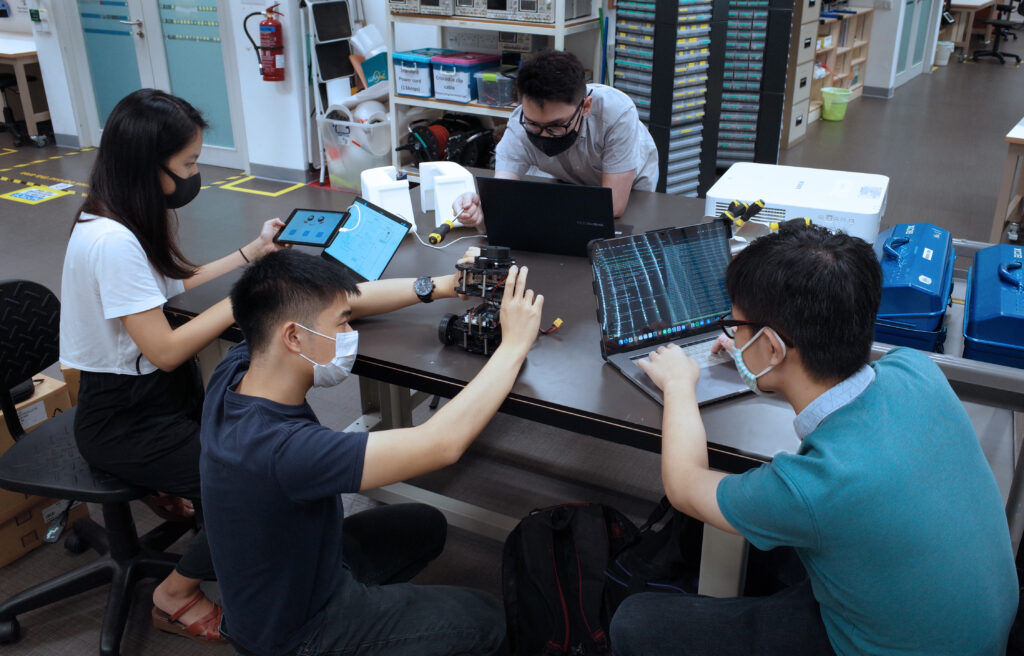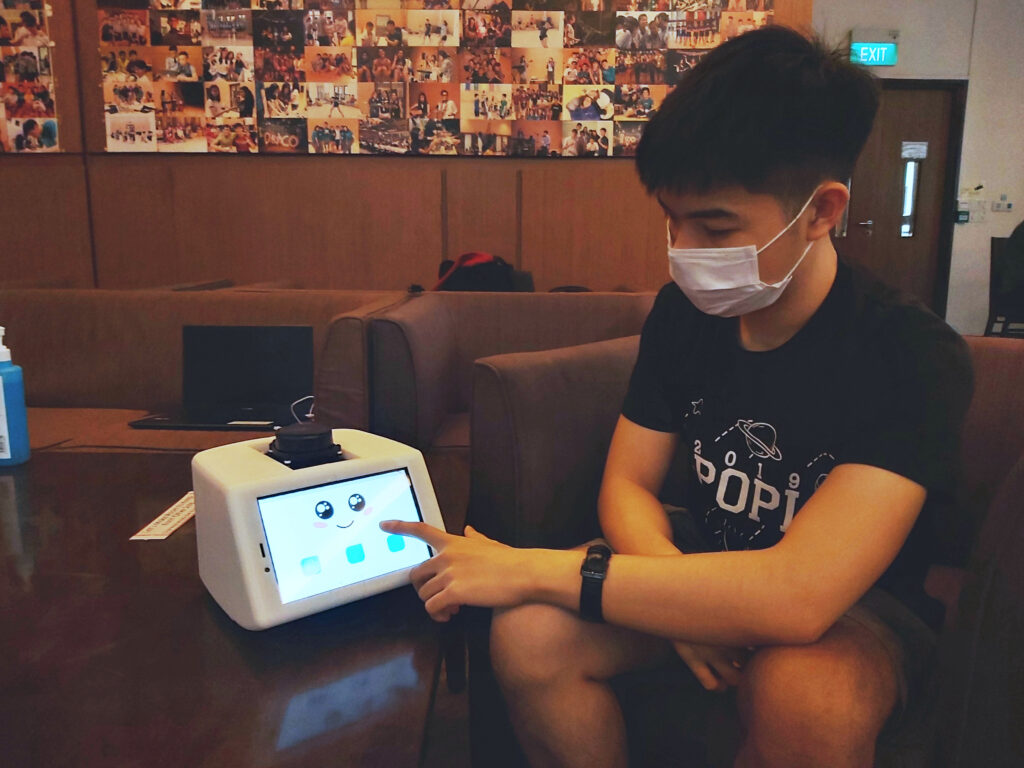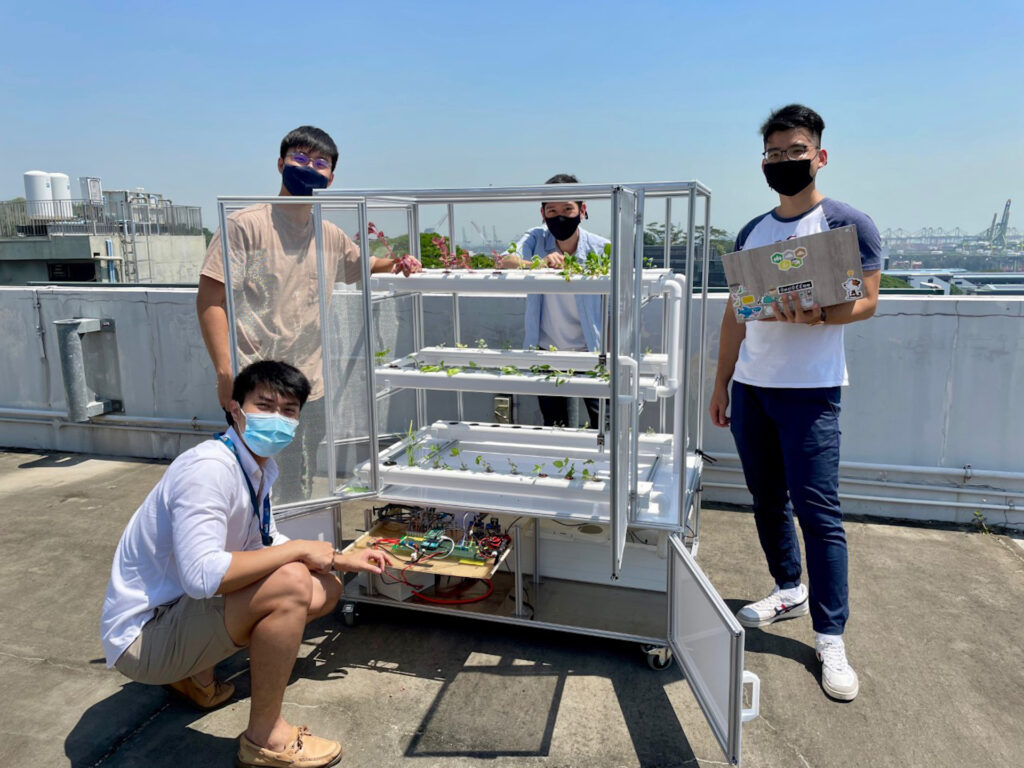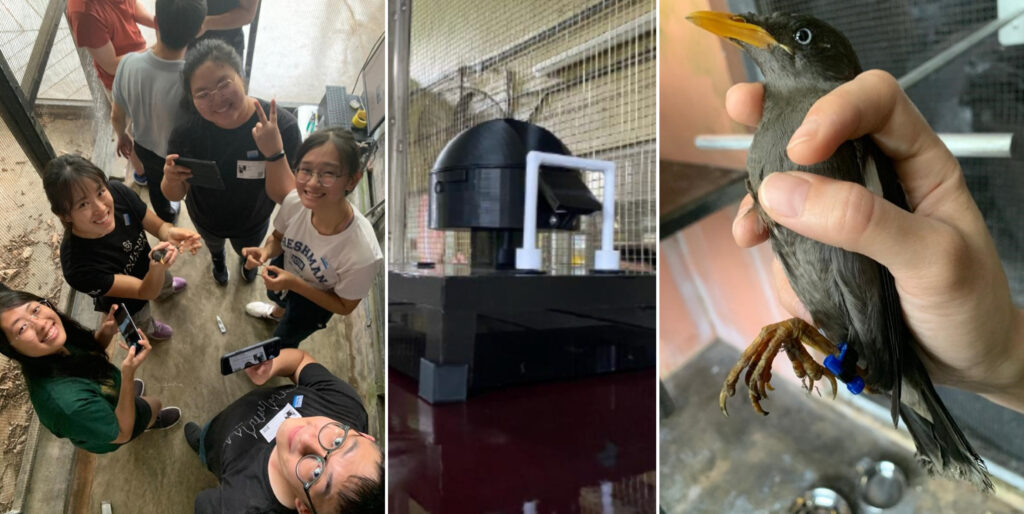NUS Undergraduates Push the Frontiers of Engineering and Design
March 30, 2021
IN BRIEF | 5 min read
- When one explores uncharted territory, things can go wrong. Training undergraduate students to solve complex challenges is precisely the aim of the Innovation & Design Programme (iDP) at NUS Engineering. It was established in 2009 to give students a holistic education, and the opportunity to collaborate with industry partners to work on real-world problems.

Having their 3D-printed gadget destroyed by a parrot, getting a mysterious phone call from a robot in the middle of the night, or spending their Christmas countdown debugging a crashed computer on a deserted rooftop - NUS students taking the Innovation & Design Programme (iDP) have been “there”.
When one explores uncharted territory, things can go wrong. Training undergraduate students to solve complex challenges is precisely the aim of the iDP at NUS Engineering. It was established in 2009 to give students a holistic education, and the opportunity to collaborate with industry partners to work on real-world problems.
Indeed, everything seemed to be going wrong for iDP student Michael Sutanto one night. He was alone in his room trying to debug a piece of software in a robot that makes phone calls over wi-fi, and he was facing difficulties. He almost wanted to give up when, suddenly, he was startled by an incoming call on the robot.
“I just tapped the reject button out of surprise,” said Michael, who majors in Mechanical Engineering. “At that point, no one was supposed to be able to call the robot except one of my team-mates, who told me he did not make the call. I never found out who or what was on the other end of the line. It seems our robot worked too well!”
Michael is in a team of iDP students working on “Ah Bot”, a moving robot with a touch screen that keeps an elderly person company. It has functions like videos, music and “memory jogging”, where the user is shown old family photos or the like. It also helps family members monitor and communicate with the elderly user remotely. The robot has a 3D laser scanning device that detects the user’s presence, and motorised wheels that allow the robot to steer towards the user.

Developed in collaboration with Sengkang General Hospital, Ah Bot helps fill in when a human companion is unable to be physically present. Dr Puneet Seth, a Senior Consultant at the Department of Emergency Medicine at the hospital, said that family members he spoke to in the course of his duties were increasingly concerned about their elders being alone for extended hours as the younger ones were out working.
Interdisciplinary learning as the way forward
The iDP welcomes undergraduate students from different disciplines in NUS, not just Engineering. That is exemplified by Ah Bot team member Shirley Wang, who majors in Theatre Studies at NUS Arts and Social Sciences.
She was tasked to design the elderly-friendly user interface for Ah Bot, which is simpler and more interactive than a smartphone. As the team puts it, the user engages the smartphone, but this robot engages the user. On how her experience in theatre helped with this, Shirley explained, “From applied theatre practices, you can see what kind of interaction you could possibly devise with the robot that might be effective for seniors.”
Meanwhile, another group of students has invented a wearable device that could save lives in hospital emergency rooms.
Many critical emergency patients need constant monitoring of their heart condition using electrocardiogram (ECG) machines. But this is not always possible, as hospitals have limited numbers of these bulky and expensive machines.
To address this, the iDP students invented a wearable ECG machine not much bigger than a smartphone. Instead of processing the data within the device, which would make it bulky, it sends the data through the Internet to a cloud server that analyses it using machine learning. The computers can detect subtle patterns in the ECG that indicate abnormal conditions requiring immediate medical attention, and automatically alert the doctor.

Team member Joshua Seetoh, who majors in Chemical Engineering, said they worked closely with doctors at the National University Hospital and as a result, they were able to quickly discover and fix problems.
For example, they discovered early on that the ECG signal was being drowned out by electromagnetic interference from hospital equipment, so they thickened the shielding on the device and improved their signal processing algorithms to filter out the noise.
They also modified the wiring from being hard-soldered to the device to being detachable with crocodile clips. This prevented tangling and cut the time needed to put on the device from five minutes to two minutes.
The students are planning to apply the same concept to acoustically monitor patients’ breathing rate.
The virtues of community involvement
At the iDP, giving back to the community is a key theme. One project that is very much in that mould is a hydroponics system that is high-tech, yet accessible to non-commercial users.

The system has three levels of kang kong, caixin, lettuce and other vegetables growing in a liquid medium, with a moving camera that takes pictures of the crops and sensors to monitor environmental conditions and nutrient levels via an app. The students said hydroponics kits for individual consumers currently do not offer this degree of automation and customisation.
It was an opportunity for NUS Computer Engineering student Benjamin Chong to learn practical skills in mechanical engineering, such as the uses of items called countersunk hex nuts. At the same time, NUS Mechanical Engineering student Nicol Lam explored the unfamiliar realm of horticulture through experimentation with the growth requirements of different plants.
There were also memorable episodes, such as spending the night of Christmas eve on the rooftop of Block E2A, with a beautiful panorama of Singapore’s harbour, while frantically trying to rescue the hydroponics from a computer crash.
But ultimately, the greatest satisfaction came from working with people living in the residential district of Teban Vista to grow the hydroponic crops in their neighbourhood.
One resident who was originally sceptical of hydroponics was impressed that it actually worked, while others enthusiastically posted photos on social media after harvesting and cooking their very own hydroponic vegetables.
Lending a helping hand to animals
Some iDP projects give animals a helping hand. One instance is the mysterious black dome-shaped object that suddenly appears one day in an enclosure housing Javan Mynas at the Singapore Zoological Gardens. This mysterious object is for monitoring the health of birds.
A tasty morsel of food sits in an opening on the side of the dome. Suspicious at first, the bird stays clear of the setup until its human handlers leave the enclosure, and then the automatic camera takes a picture as it alights on the perch in front of the food bait.
Unbeknownst to the bird, the perch is a weighing scale, while a sensor scans the radio frequency identification (RFID) tag on its leg. If the bird’s weight is more than 30 per cent lower than when it was last measured, the door of the cage surrounding the dome system snaps shut, and an alert is sent to the bird keeper’s smartphone app, warning that that bird’s health needs attention.

The students said this kind of system will save zoos considerable labour to manually catching and weighing animals and could reduce keepers’ exposure to dangerous animals.
However simple the system may seem, it was not easy putting it together. In the beginning, the group was plagued by erratic data and sometimes complete failure of the detector to register a reading. Team member Benjamin Chan, who majors in Computer Engineering, said, “The results were on and off and we didn’t know why. It can work one day, and when we come back the next day it doesn’t work!”
This went on for a month before they finally fixed it by redesigning the system with separate components that each performed a particular operation, which made it easier to trace and fix problems.
But that was not the end of their troubles. One day a rogue Macaw got into the myna enclosure and broke the bird perch that had taken the students seven hours to 3D-print.
Yet, it is through these experiences that iDP students at NUS gain valuable experience in tackling the real-world problems they will face after they graduate. The director of iDP, Associate Professor Loh Ai Poh, said, “iDP students all have their fair share of ups and downs. It is through these cycles of success and failure that they grow to be confident and to believe that success will always triumph if they persevere. We have a great programme that nurtures students, not just in multi-disciplinary learning, but also in providing a safe environment for self-discovery, and at the same time, learn good engineering skills. Not many engineering programmes around the world facilitate engineering education in this manner!”
This story first appeared in NUSnews on 30 March 2021.

